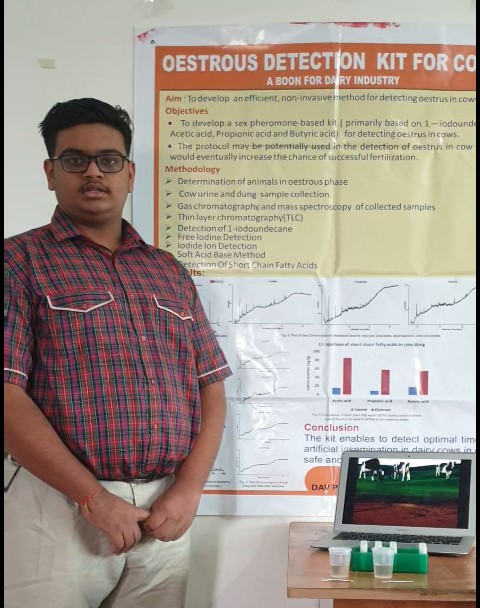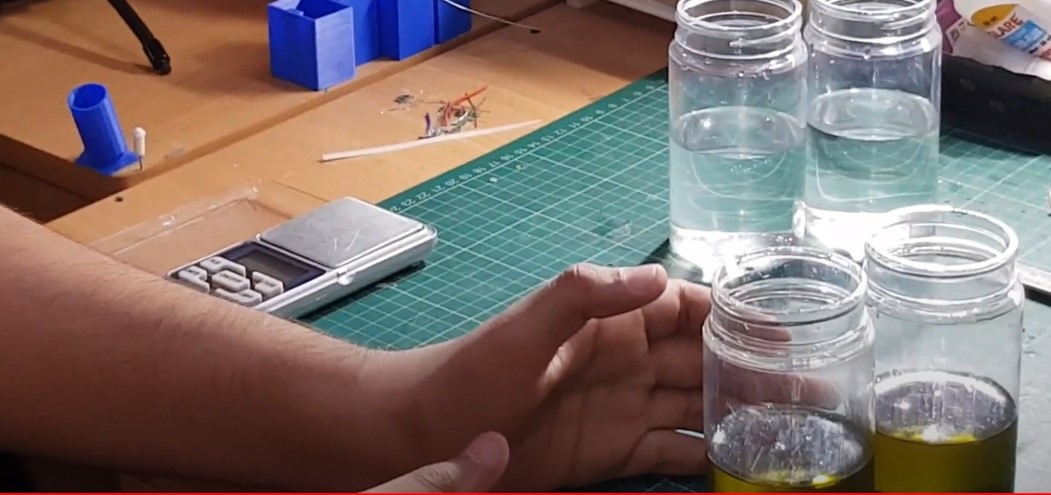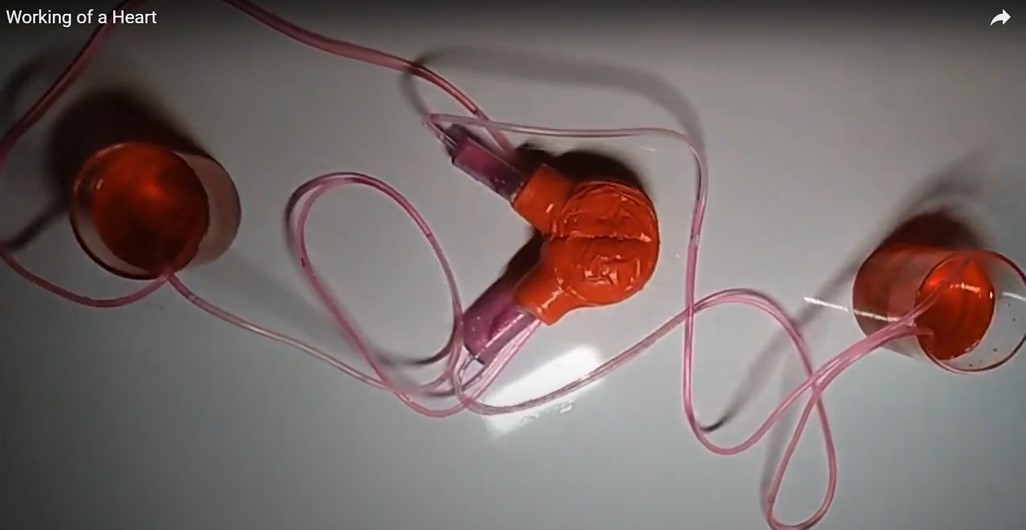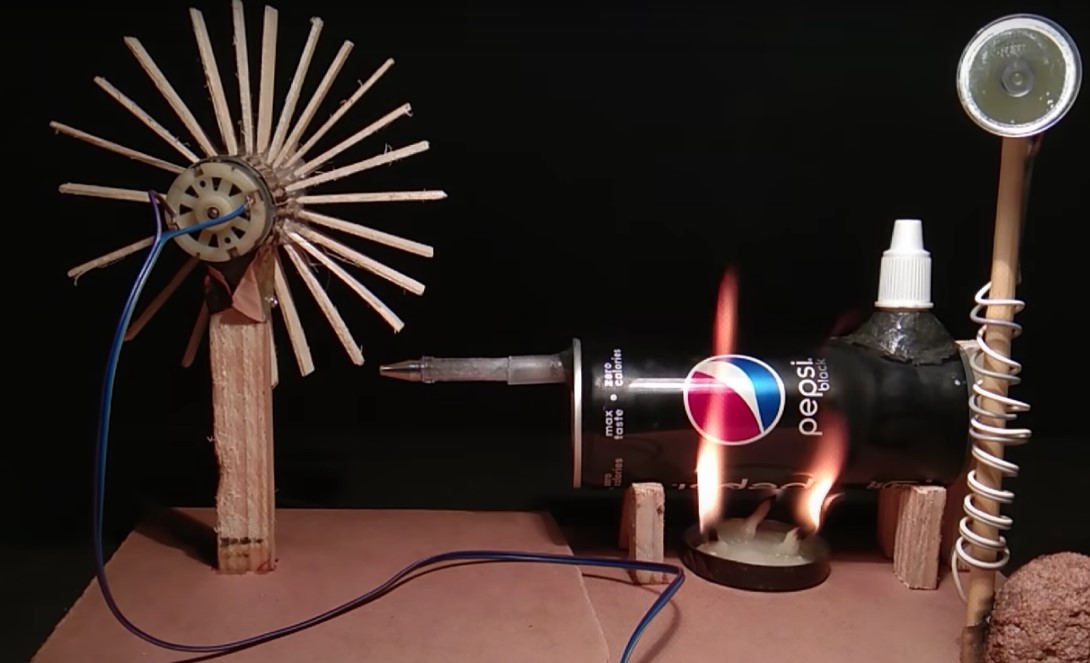1. Kit to detect oestrus cows

Description
It is important to find the optimal artificial insemination time in dairy cows for successful fertilisation but that is not easy to identify based on the behavioural patterns alone. Here, cow dung and urine samples were collected and analysed to identify the presence of certain substances in oestrus cows. Based on the results, paper-based kits were developed to identify oestrus cows.
Exhibit Review
| Evaluation parameter | Comments |
|---|---|
| Innovation | New idea |
| Exploration | Tests conducted for 20 cows with a mix of oestrus and non-oestrus |
| Scientific approach | Tests, measurements and data recording demonstrated |
| Science principle | Demonstrated by applying science concepts (1) reproductive cycle (2) acids base identification |
| Technical skills/ workmanship/ craftsmanship | Collection of samples and testing |
| Utility | Good example of using technology for solving real problem |
| Economics | Special material and equipment used for analysis but final solution using simple material - paper strips soaked in bromothymol blue |
2. Understanding Viscosity

Description
Viscosity is often confused as related to density. This is due to the fact that viscous fluids often look dense.
Experiment 1: This experiment tries to show that they are not related. For this, two small cups are filled equally with castor oil and water. Castor oil is more viscous than water. Hence if viscosity is connected to density, then castor oil should be denser than water.
Experiment 2: Viscosity is a type of frictional force, which is applied by the liquid layers on each other. A small plastic food container plate is taken, which has less friction. A drop of water and a drop of castor oil is placed on an inclined plate and observed.
Experiment 3: Different shaped but similar weighing small object pairs were chosen. Two jars were filled with water and two with castor oil.
Exhibit Review
| Evaluation parameter | Comments |
|---|---|
| Innovation | Not common |
| Exploration | Three different experiments to show the difference between density and viscosity |
| Scientific approach | Appropriate measurements done using available instruments; hypothesis and prediction stated before conducting the experiments |
| Science principle | Clearly communicated through the experiments |
| Technical skills/ workmanship/ craftsmanship | Usage of appropriate instruments for measurement |
| Utility | Direct application not stated explicitly in the description but multiple scientific inferences can be drawn based on the phenomenon demonstrated. |
| Economics | Nothing special used but still effective exploration done. |
3. Working of a Heart

Description
Model made using a balloon, foam ball, and plastic tubes, demonstrating the pumping action of a heart with the help of tubes and lids. This will make us understand how the blood comes in and goes out.
Exhibit Review
| Evaluation parameter | Comments |
|---|---|
| Innovation | New way of designing a working model to demonstrate a phenomenon which is difficult to visualise sometimes |
| Exploration | A little exploration done to design working valves |
| Scientific approach | Understanding and explaining the phenomenon |
| Science principle | Communicated very clearly |
| Technical skills/ workmanship/ craftsmanship | Dexterity shown in making each valve work to get the entire model working |
| Utility | Explains the circulatory system in a hands-on manner Can be made by younger children to understand the circulatory system |
| Economics | Simple but durable material, low cost |
4. Steam Engine Model

Description
A model of a steam engine, where a waste soft drink can has been used as the boiler. Heat energy of the steam is converted to mechanical energy, which is used to rotate a toy motor, thereby generating electricity.
Exhibit Review
| Evaluation parameter | Comments |
|---|---|
| Innovation | Using an (1) Aluminium can as boiler (2) Rotating toy motor to make a generator |
| Exploration | The design lends itself to exploration. Some other suggestions- (1) Vary the number of blades on the turbine and observe the impact on the number of times the light switches ON in one minute. (2) Replace the aluminium can by a tin can or a layer of any other metal and observe the impact on time taken before the light switches ON the first time. |
| Scientific approach | Yes. |
| Science principle | Communicated very clearly |
| Technical skills/ workmanship/ craftsmanship | Dexterity shown in making of the turbine, nozzle, positioning the nozzle, boiler and candle. Above all this, effort is visible in fine tuning the model to make it work. |
| Utility | Effectively models the conversion of thermal energy to electricity. The model can be used to explore and hence refine actual engines. |
| Economics | Simple but durable material, cost is pretty low with most of the material being recycled. |
